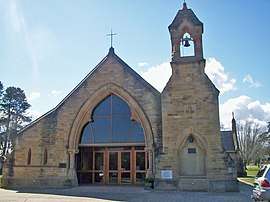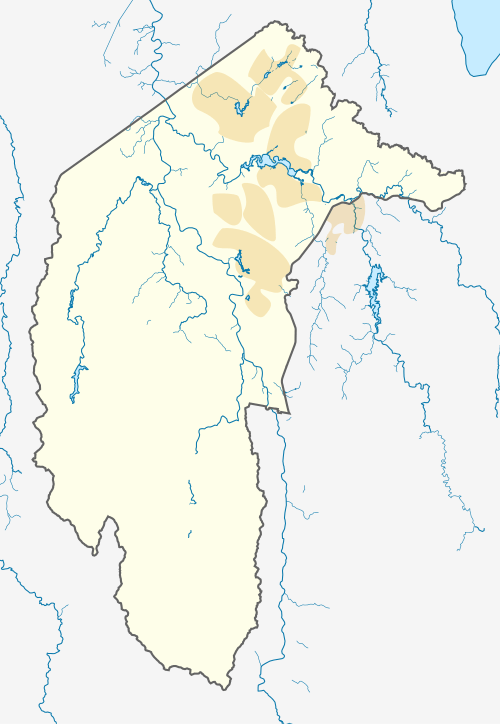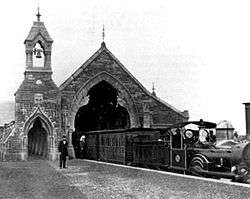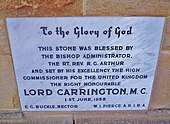All Saints Church, Canberra
All Saints Church is an Australian Anglican church in the Canberra suburb of Ainslie. The church is in the Anglican Diocese of Canberra and Goulburn.
| All Saints Church | |
|---|---|
 All Saints Church with the bell tower moved to the opposite side when it was rebuilt | |
 All Saints Church Location in the Australian Capital Territory | |
| 35°15′53″S 149°8′22″E | |
| Location | Ainslie, Australian Capital Territory |
| Country | Australia |
| Denomination | Anglican |
| Website | allsaintsainslie |
| History | |
| Status | Church |
| Founded | 1958 |
| Architecture | |
| Functional status | Active |
| Architectural type | Church |
| Specifications | |
| Materials | Sydney sandstone |
| Administration | |
| Diocese | Canberra and Goulburn |
| Clergy | |
| Rector | Lynda McMinn |
Description
The original building started as the First Mortuary station in Rookwood Cemetery, Sydney, as noted on a plaque on the church:
- "The stonework of this church was originally used to build the first mortuary station on the branch railway to the necropolis rookwood near Sydney. This plaque was presented by the Australian Railway Historical Society to commemorate the old station which was in use from 1868 to 1948."[1]
The railway line went underneath the main arch in the building, where the aisle is in the present church. The side aisles are where the platforms for the station were located. Coffins would be taken out on the railway line to the cemetery for burial. The roof of the building burned down in a fire. The Ainslie parish bought the stonework for £A100, and the stonework was transported to Canberra in 1957 where the current roof was built and work undertaken to turn it into the present church. In the process, the bell tower was moved from the left side of the entrance to the right.
There are two stained-glass windows from England. The east window is from St Clement's, Attercliffe, in Sheffield. There is a second, smaller, window from St Margaret's Bagendon in Gloucestershire.[2]
The church bell was originally on a Shay locomotive owned by the Commonwealth Oil Corporation that ran on the former Wolgan Valley Railway in the Blue Mountains, before being dismantled in 1925. The bell was presented to the church by the Australian Railway Historical Society in 1958.
A stone on the church was set by the High Commissioner for the United Kingdom, Lord Carrington, to mark the blessing of the church on 1 June 1958.
The church contains a rare 1857 Bishop and Starr pipe organ, installed in 1989–90 after being transferred from Wealdstone Baptist Church in Harrow, England.
All Saints maintains a traditional choir, with a weekly sung Solemn Eucharist and a monthly Evensong from April to September.
At the east end of the church is a garden and columbarium. The church has several stained glass windows, and gargoyle sculptures on the outside of the building. On the inside stonework are two carved angels. It has two side chapels located on opposite sides of the chancel, one dedicated to the Virgin Mary and the other after Gethsemane.
Heritage list
The church was added to the Australian Capital Territory Heritage Register on 14 September 2000.[3]
Gallery
 The Mortuary Station in Rookwood Cemetery c. 1865[4]
The Mortuary Station in Rookwood Cemetery c. 1865[4] Stone set on the blessing of the church in 1958
Stone set on the blessing of the church in 1958
References
- https://www.allsaintsainslie.org.au/index.php/history/
- "20065. All Saints Church (Entry to the ACT Heritage Register)" (PDF). ACT Heritage Council. Retrieved 12 March 2014.
- State Rail Authority of New South Wales Archives Section, How & Why of Station Names: meanings and origins..., Second Edition, 1982, State Rail Authority of New South Wales, inside back cover